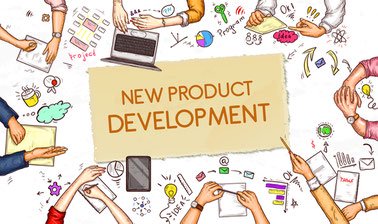
3D Printing, also known as Additive Manufacturing, improves upon the traditional product design and development process and offer manufacturers many advantages. Below is a summary of what Additive Manufacturing (AM), can do for product design and development – and it should be noted that nearly all of these benefits save companies either time, money, or both!
- Rapid Prototyping Results in Better Design: the general rule of thumb in product design is that changes become more expensive the further along you are in the product development process. Therefore, identifying issues and optimizing the design early on is crucial! Additive Manufacturing technologies are often faster than traditional machinery and, thus, have been used for many years to quickly manufacture prototypes, often referred to as rapid prototyping. This method has several advantages such as allowing designers to quickly manufacture one or more inexpensive prototypes in order to determine which design should be selected for production. Rapid prototyping with 3D printing allows for proof of concepts and testing of multiple functional models; this technique also allows designers to experiment with advanced materials to test the design for manufacturability. Rapid prototyping results in more optimal product designs, saving companies significant time and money!
- Location Flexibility: with AM, the design and product development processes, including prototype fabrication, can be performed anywhere! Historically, prototypes had to be tooled, which often involved offshore manufacturers that would transport the prototype back to the design team. Since the design and product development process is iterative, multiple prototypes are often required - resulting in months of fabricating, transporting, testing and optimizing of prototypes, prolonging the time to market! Fortunately, Additive Manufacturing changed everything. Designers can now have prototypes fabricated in-house or by a AM Service Provider. 3D printing only needs an electronic CAD file in order to manufacture a new prototype and does not require retooling, machine changes, or logistics and communications with a 3rd party – resulting in significant time savings and minimizing time to market!
- Optimized Design based on Stakeholder Input: Tangible prototypes allow stakeholders to more readily conceptualize and identify with a product since they are able to hold and examine it; thus, companies are better able to communicate their vision by using these physical models and prototypes as well as gain stakeholder alignment. Rapid prototyping with 3D printing allows designers to incorporate real-time input into the product development process and nimbly tweak designs with no delays due to tooling adjustments. Rapid prototyping allows stakeholders and customers to more actively participate in the product design and development process, without sacrificing time to market!
- Elevated Product Characteristics: traditional manufacturing technologies struggle with extremely complex parts and tooling fabrication costs quickly escalate as complexity increases. The good news is that complexity is free with 3D printing, providing additional latitude to product designers! Additive Manufacturing is an excellent solution for production involving very complex parts such as complex curvatures and varying wall thickness.
- Higher Risk Tolerance: since 3D printing enables the rapid fabrication of prototypes, designers have more freedom to take design risks without the looming threat of significant costs or delays. Additionally, by the time the part is ready for production, many of the potential manufacturing issues or concerns have been fully tested and vetted due to rapid prototyping.
- Unparalleled Design Freedom: additive manufacturing technologies relieve some of the design constraints that are common in traditional manufacturing and assembly methods. With 3D printers, designers can create new and innovative solutions without constraint! One of the big benefits of 3D printing is its ability to produce nearly any geometrical shape the designer can create as well as many surface textures that traditional manufacturing methods struggle with. 3D printing also provides unparalleled design freedom when it comes to materials including some plastics and metals that are specifically used for 3D printing technologies.
About Re3dTech
At Re3dTech, we believe that 3D printing will repatriate and revitalize our manufacturing industry – and is the future of American manufacturing! RE3DTECH provides 3D printing and contract manufacturing services with a commitment to quality, speed, and customer service. We supply thousands of parts to customers every week in industries including Healthcare, Automotive, and Aerospace. It is our mission to provide a custom solution to our customers’ needs.
Leveraging our production additive manufacturing technologies, we have the in-house expertise and capabilities to help lead your company down the path of additive. Take advantage of the advances in 3D printing to improve your manufacturing - contact us today to see how we can help!

